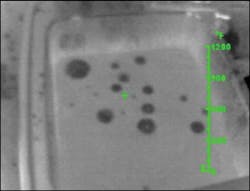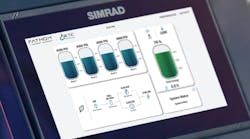This month's theme is hazardous materials. In keeping with the theme, this column will revisit the topic of using thermal imagers (TIs) at hazmat incidents. While hazmat incidents are not the most common TI applications, they are important. A number of fire departments have received TI funding through their hazmat companies, which signals the importance of the technology in hazmat response. Combining this month's tips with regular practice and use will hone and develop skills at a variety of scenes, not just hazmat incidents.
This month's column will also ask you to become involved with this series in 2006.
Essentials
As with all technology applications, it is important that firefighters remember the normal usage and limitations of thermal imagers. While creativity pushes users to test boundaries and explore new TI applications, creativity must be tempered by reality. The user must have a realistic expectation of what a TI can and cannot do.
- Safety is always paramount, so don't overlook the basics. TIs are not intrinsically safe, nor is there an explosion-proof model available to the fire service. If the hazmat team is concerned about explosive limits, the TI should probably not enter the hot zone.
Practice Makes Perfect
Tracking product spills and identifying product levels in containers are two common hazmat applications for the TI. You can practice both skills by using materials in and around the firehouse. Pour non-toxic materials on the floor, or in a sink filled with water. Have members use the TI to locate and track the material. You can fill empty containers, or use partially full containers from around the station, to practice determining product levels. As you examine items in the firehouse, you should notice that sometimes you cannot determine a product level. This is not because there is no product, but rather because there is no temperature difference on the container surface for the TI to detect.
Transfer these same skills out into your fire district. While traveling your still district, you should see product levels more frequently because the effects of the sun and weather often create temperature differences within the container.
Final Report
While the TI does not help you remove the hazardous materials at an incident, it can help you locate and isolate the materials. Proper use under the correct conditions can also help firefighters identify the quantities of material they are facing. Regular use around the firehouse as well as on the streets will give firefighters the skills and confidence to use the TI regularly in all types of incidents.
Your Input
This column will take on a new format for much of 2006, which will require input from thermal imager users. I would like to take your real-life TI experiences and share them with the rest of the fire service. What has worked for you, when you thought it would not? What did not work for you, even though you thought it should? What has been your most successful use of a TI, or your greatest disappointment? What do you want to know about your TI, but have not been able to ask?
This column will take your experiences and help analyze them so that all firefighters who read Firehouse can benefit and learn from what happens in your fire company. Send as much information as possible about the incident or situation. Include the make and model of your thermal imager, as well as a way for me to contact you with additional questions. Tell me about your department and the area you serve. And let me know how anonymous you want to be: your situation can be identified by name and fire department, by first name and state ("Bill in Wisconsin"), or generically ("a captain on a small career fire department").
E-mail your story, experience, frustration or question to me at [email protected]. With your help, this column can address the information you specifically want to know and help you educate your brothers and sisters in the fire service. Be safe.
Jonathan Bastian is a thermal imaging training consultant for Bullard. He is certified as a thermal imaging instructor by the Law Enforcement Thermographers Association (LETA), the international public safety organization specializing in thermal imager certification and training. He is also the author of the FD Training Network "FireNotes" book, Thermal Imaging for the Fire Service. Educated at Brown University and licensed as a high school teacher in Illinois, Bastian served 12 years on the North Park, IL, Fire Department, including the last three as a captain. As health and safety officer, he led the development and implementation of the department's rapid intervention team SOG. Bastian is a certified Fire Instructor I and Firefighter III, and he spent 12 years as an EMT-I/D. He has taught classes on thermal imaging, rapid intervention teams and search and rescue operations. He is currently a public safety official in Central Kentucky. If you have questions about thermal imaging, please send them to [email protected].





